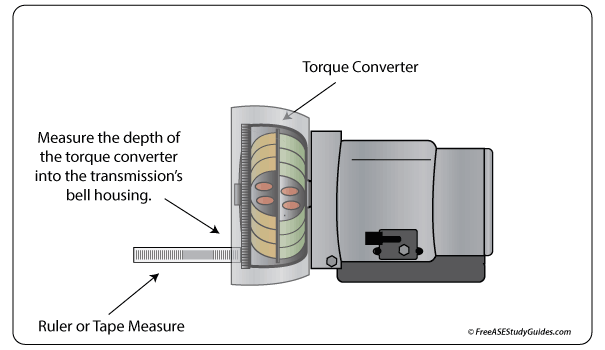ASE A2 Automatic Transmission Practice Test
51. After a long drive, red fluid is seen on the transmission case and under a vehicle's chassis. Technician A says this could be caused by fluid aeration. Technician B says this could be caused by engine overheating. Who is correct?
- A. Technician A
- B. Technician B
- C. Both A and B
- D. Neither A or B
52. There are metal flakes and shavings at the bottom of a transmission's oil pan. Which of the following is causing this debris?
- A. This is normal.
- B. A worn band.
- C. A worn clutch.
- D. Chipped gear teeth.
53. A vehicle with an automatic transmission creeps forward in neutral. Which of the following is MOST likely causing this condition?
- A. The pressure regulator valve.
- B. The manual valve.
- C. A shift valve.
- D. The throttle valve.
54. When removing a torque converter from an automatic transmission, the technician should:
- A. Measure the depth of the torque converter into the transmission's bell housing before removal.
- B. Inspect the torque converter's hub for discoloring, nicks, scratches, and burrs.
- C. Both A and B.
- D. Neither A or B.
55. After overhauling an automatic transmission, the input shaft is binding and has no endplay. Technician A says installing the transmission and driving the vehicle will correct this condition. Technician B says a thinner selective washer may be required. Who is correct?
- A. Technician A
- B. Technician B
- C. Both A and B
- D. Neither A or B
